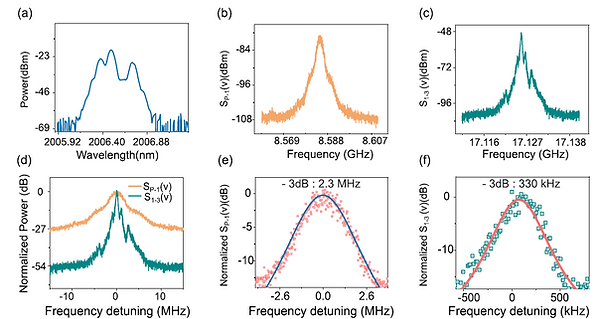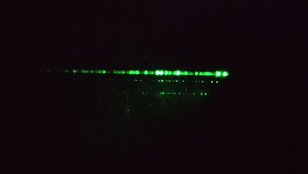
Research
Welcome to our research group, where we specialize in nonlinear optical phenomena in waveguides, microresonators, and nanowires.
Nonlinear optics in taper-microresonator systems
Whispering Gallery Mode(WGM) resonators represent a captivating class of optical microcavities renowned for their ability to confine light within a circular or spherical structure through continuous total internal reflection. Due to their small mode volume and ultrahigh Q-factor, microresonators significantly reduce the threshold of nonlinear optical phenomena like Brillouin Scattering, Four-Wave Mixing, etc. We use a tapered optical fiber to couple light into the microsphere resonator to observe such effects.

At GHz frequencies, which are used in Radar communications and electronic warfare, electrical circuits suffer from electromagnetic interference (EMI), high loss, and limited tunability. Photonics provide huge bandwidth, immunity from EMI, and low loss and weight, which makes them potential candidates for wide-band microwave photonic signal processing.
We develop novel techniques, exploiting coherent interaction between the Brillouin excitation pathways, to realize an analog of coherent quantum interactions, e.g., Fano resonance, EIT-like, and their application to optically and electrically controlled microwave photonic signal processing.
Analog of coherent quantum interactions in microwave domain

Nonlinear optics at 2000nm
Wavelength region around 2 μm is emerging as the wavelength region of interest due to its application in gas sensing, medical technology, an optical communications. Gas molecules e.g. CO2, CO, which are the main atmospheric pollutant and contribute to green house effect, have transition in the 2000 nm and therefore, this wavelength region is important for atmospheric sensing. The availability of wide bandwidth (400 nm) thulium-doped fiber amplifiers and hollow-core fibers make 2 um wavelength as the potential choice for future optical communications. To enable these applications, it is important to develop coherent optical sources. Here, we are developing coherent sources and signal processing techniques at 2 um for applications in optical communications, sensing, and medical surgery.


Harmonic generation in a dispersion engineered silica nanowire
Traditional frequency comb sources in the visible region are mode-locked lasers with a larger footprint. Generating compact frequency combs on the visible region is challenging due to the unavailability of nonlinear materials that have anomalous dispersion. We exploit the nonlinearity of silica fiber to translate frequency combs in the IR (1550 nm) regime to the visible regime.
Generated visible comb extends from NIR to deep-UV by the simultaneous second (780 nm), third (520 nm), and sixth (260 nm) harmonic (second harmonic generation of third harmonic generation) generation on dispersion-engineered silica nanowire.

